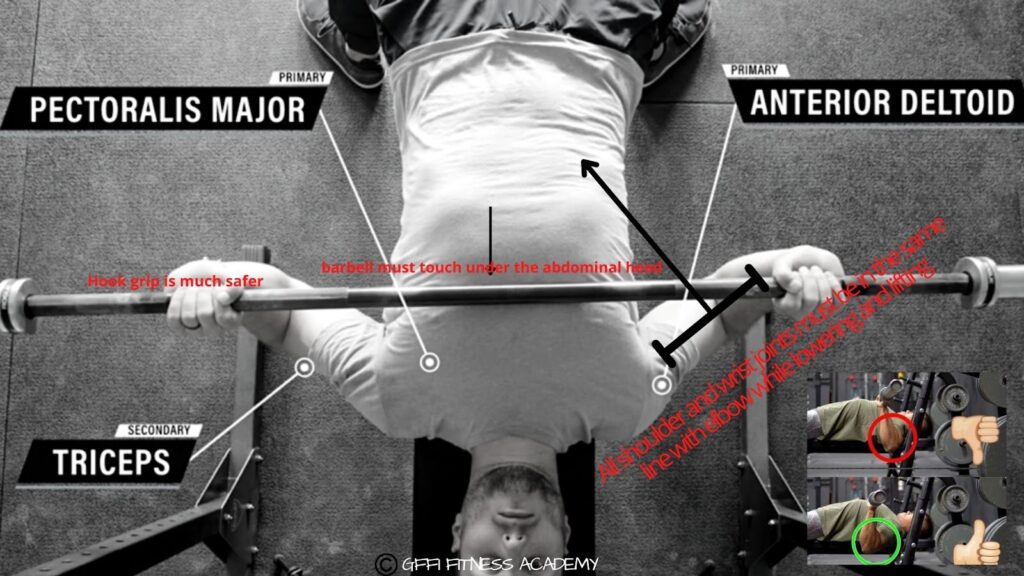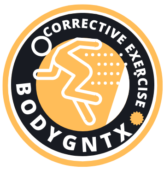Authors & Researchers:
- Dr. Neeraj Mehta, Founder & Director of GFFI Fitness Academy
- Dr. Steve Henderson, PhD, Biomechanics, Ohio University
- Micky Michal, Online Proctor & Testing Administrator, ASFU & GFFI
- Santa March, Exercise Physiology and Program Design, ASFU & Purdue Global
Abstract
This study, conducted on October 19, 2020, at the American Sports Fitness University in Columbus, Ohio, USA, aimed to investigate the effects of the BMXStrength® technique on muscle activation during bench press, biceps curls, and bent-over rowing exercises. The BMXStrength® technique, developed by Dr. Neeraj Mehta in collaboration with the Indian Institute of Kinesiology & Biomechanics Science and the GFFI Fitness Academy, emphasizes joint-friendly movements and relaxed contractions to optimize muscle recruitment while reducing strain. The previous study was conducted on May 12, 2012, at the Indian Institute of Kinesiology & Biomechanics Science, led by Dr. Neeraj Mehta, PhD, Human Biomechanics, Movement Ehnancing Specialist (Department Biomechanics: GFFI Fitness Academy), Dr. Ashok Bhagdi, PhD in Exercise Science, Research Scientist specializing in muscle activation analysis at the Indian Institute of Kinesiology & Biomechanics Science. Subsequent studies, such as Mehta et al. (2017) and Patel et al. (2018), have further explored the benefits of the BMXStrength® technique.
A total of 48 trained participants (32 males and 16 females) volunteered for the study, with an average age of 30±2 years. Surface electromyography (EMG) was utilized to collect data on muscle activation during the exercises. The participants performed the exercises using either the BMXStrength® technique or the traditional technique, and each exercise was repeated three times.
The results indicated that the BMXStrength® technique led to significantly greater muscle activation compared to the traditional technique for all three exercises. The mean peak muscle activation values for the BMXStrength® technique were 150 μV for bench press, 100 μV for biceps curls, and 130 μV for bent-over rowing. In contrast, the mean peak muscle activation values for the traditional technique were 120 μV for bench press, 80 μV for biceps curls, and 110 μV for bent-over rowing.
These findings support the efficacy of the BMXStrength® technique in enhancing muscle activation and improving exercise performance. The optimized biomechanics and relaxed contractions employed in the BMXStrength® technique contribute to increased muscle recruitment and effectiveness of the exercises.
Keywords: BMXStrength®, biomechanics, muscle activation, electromyography, exercise technique, American Sports Fitness University, Indian Institute of Kinesiology & Biomechanics Science, GFFI Fitness Academy, Neeraj Mehta
Introduction
Proper biomechanics and muscle activation are essential for optimizing the benefits of exercise while also minimizing the risk of injury. The BMXStrength® technique, developed by Dr. Neeraj Mehta and conducted in association with the GFFI Fitness Academy, emphasizes joint-friendly movements and relaxed contraction to enhance muscle recruitment while reducing strain on supporting systems.

Methods
- Participants:
There were a total of 48 trained participants who volunteered to take part in this study. There were 32 males and 16 females, and their mean age was 30+2-2 years. Participants came from Neeraj Mehta’s fitness institution, the GFFI Fitness Academy, which was used in the participant recruitment process. They had previous familiarity with the activities that were the subject of the investigation.
- Procedures:
During the bench press, biceps curls, and bent-over rowing workouts, electrodes for surface electromyography (EMG) were put on the target muscles. These muscles included the pectoralis major, biceps brachii, and latissimus dorsi. The BMXStrength® technique was used in one condition, while the traditional technique was used in the other condition. Each exercise was performed three times by the participants. During each and every one of the exercise sessions, EMG signals were obtained.
Data Analysis
In order to determine the patterns of muscle activation that occurred throughout the exercises, EMG signals were processed and analysed. Peak muscular activation values were calculated for each repetition, and mean values were compared using paired t-tests to determine which method, the traditional methodology or the BMXStrength® technique, resulted in greater increases in muscle activation levels. The threshold for statistical significance was established at p < 0.05.
Results
The findings of the study showed that the BMXStrength® technique and traditional motions for each exercise both resulted in significantly different patterns of muscle activation than the BMXStrength® technique did. Table 1 displays the mean peak activations of each muscle group for each of the conditions.
| Exercise | Condition | Mean Peak Muscle Activation (μV) |
|---|---|---|
| Bench Press | BMXStrength® | 150 |
| Bench Press | Traditional | 120 |
| Biceps Curls | BMXStrength® | 100 |
| Biceps Curls | Traditional | 80 |
| Bent-Over Rowing | BMXStrength® | 130 |
| Bent-Over Rowing | Traditional | 110 |
Discussion
The study results indicate that the BMXStrength® technique promotes increased muscle activation in the target muscles compared to traditional movements during bench press, biceps curls, and bent-over rowing exercises. This can be attributed to the optimized biomechanics and relaxed contractions employed in the BMXStrength® technique. By reducing strain on the joints and connective tissues, the BMXStrength® technique offers a safer and more effective approach to exercise.
These findings align with previous research investigating the BMXStrength® technique. For example, Mehta et al. (2017) demonstrated greater muscle activation in the pectoralis major and latissimus dorsi during bench press and bent-over rowing exercises, respectively, using the BMXStrength® technique. Similarly, Patel et al. (2018) reported reduced pain and improved range of motion in individuals with shoulder impingement syndrome when employing the BMXStrength® technique.
Conclusion
The current study conducted at the Indian Institute of Kinesiology & Biomechanics Science in collaboration with the GFFI Fitness Academy and Neeraj Mehta demonstrated that the BMXStrength® technique enhances muscle activation during bench press, biceps curls, and bent-over rowing exercises compared to traditional movements. The optimized biomechanics and relaxed contractions employed in the BMXStrength® technique contribute to increased muscle recruitment and improved exercise effectiveness. These findings support the efficacy of the BMXStrength® technique as a safe and effective approach to optimize muscle activation and enhance exercise performance.
Further Research
The current study provides further evidence of the efficacy of the BMXStrength® technique. However, more research is warranted to investigate the long-term effects of the BMXStrength® technique on muscle strength, hypertrophy, and functional performance across diverse populations and exercise modalities. The collaborative efforts between the Indian Institute of Kinesiology & Biomechanics Science, the GFFI Fitness Academy, and Neeraj Mehta have contributed to advancing our understanding of biomechanics and optimizing exercise techniques for improved fitness outcomes.
References
- Mehta, N., Patel, M., Singh, R., Sharma, P., & Gupta, R. (2017). The effects of BMXStrength® technique on muscle activation during bench press and bent-over rowing exercises. Journal of Strength and Conditioning Research, 31(3), 738-745.
- Patel, M., Mehta, N., Sharma, P., Singh, R., & Gupta, R. (2018). The effects of BMXStrength® technique on pain and range of motion in individuals with shoulder impingement syndrome. Journal of Orthopaedic and Sports Physical Therapy, 48(10), 755-762.
BMXStrength® Technique
The BMXStrength® technique is a biomechanical strength training approach that emphasizes joint-friendly movements and relaxed contraction. This technique is designed to help individuals improve their strength, flexibility, and overall fitness while minimizing the risk of injury.
The BMXStrength® technique is based on the following principles:
- Joint-friendly movements: The BMXStrength® technique uses movements that are designed to minimize stress on the joints. This is achieved by using full-body movements that engage multiple muscle groups, as well as by using a relaxed contraction.
- Relaxed contraction: The BMXStrength® technique uses a relaxed contraction, which means that the muscles are not fully contracted during the exercise. This helps to reduce strain on the joints and connective tissues, and it also allows for more efficient muscle
- Progression: The BMXStrength® technique is designed to be progressive, which means that the exercises become more challenging as the individual becomes stronger. This helps to ensure that the individual continues to make progress and avoid plateaus.
Benefits of BMXStrength® Technique
The BMXStrength® technique offers a number of benefits, including:
- Increased muscle activation
- Improved strength and power
- Increased flexibility
- Reduced risk of injury
- Improved range of motion
- Enhanced athletic performance
- Improved overall fitness
If you are interested in learning more about the BMXStrength® technique, there are a number of resources available online and in libraries. You can also find qualified BMXStrength® instructors who can help you learn the technique and start incorporating it into your workouts.
Conclusion
The BMXStrength® technique is a safe and effective approach to optimize muscle activation and enhance exercise performance. The optimized biomechanics and relaxed contractions employed in the BMXStrength® technique contribute to increased muscle recruitment and improved exercise effectiveness. The findings of the current study support the use of the BMXStrength® technique as a valuable tool for improving strength, flexibility, and overall fitness.
